WMG News
Inspiring the next generation of engineers
 WMG at the University of Warwick's commitment to widening participation and fostering inclusivity took centre stage during a week-long work experience programme, aimed at inspiring local students to pursue a career in engineering.
WMG at the University of Warwick's commitment to widening participation and fostering inclusivity took centre stage during a week-long work experience programme, aimed at inspiring local students to pursue a career in engineering.
The initiative was organised by WMG’s Outreach team and the University's Widening Participation Team to support under-represented students that might lack confidence or support when they consider a future in engineering. The High Value Manufacturing Catapult’s Inspiring Young Engineers project, which delivers engaging opportunities to students who might not otherwise have experienced the subject, also supported the week.
Throughout the programme, participants were mentored by WMG staff who provided valuable insights into various engineering pathways, research and careers.
Tours of the engineering facilities showed what research at a university is like - from battery development in the Energy Innovation Centre and automotive technology in the National Automotive Innovation Centre, to studying for an engineering degree at the School of Engineering.
The WMG Outreach Team also worked alongside colleagues from the University’s Creative Arts department who organised an arts-focused work experience programme to run at the same time.
The programme concluded in a celebration showcase where the students, from both the arts and engineering teams, presented their work to parents, carers, teachers and University staff, including the Vice Chancellor Professor Stuart Croft.
teachers and University staff, including the Vice Chancellor Professor Stuart Croft.
Reflecting on the programme, WMG’s Widening Participation Co-ordinator, Dr Phil Jemmett, said: “We ran this event last year with the support of the University’s Widening Participation team and immediately thought that we could scale this up, and share the model with a wider group.
“We are delighted to have had the Creative Arts stream on board because it shows how different skillsets and expertise is needed to create solutions that will actually benefit people. I’m proud to have been able to give young students an experience of how collaboration really happens.
“Throughout the week we’ve had ups and downs, challenges and successes – but that is what engineering is really like! Nothing works the first time, so the students have had to learn problem solving and resilience. I couldn’t have been happier to see all six projects from the engineering stream up and running at the final showcase – what’s more each one of them had elements and decisions devised by the students themselves.
“They have all grown in their abilities and confidence, and I hope that they take that confidence back with them to their studies, and future careers.”
This year’s programme follows the mission statement of the 2023 event, but with the addition of creative arts: “The University of Warwick's initiative reflects its dedication to providing equal opportunities in engineering and creative arts education. By empowering less privileged local students and challenging misconceptions about the subjects, they are nurturing a diverse talent pool that will shape the future of engineering and creative arts.”
The event was supported by a host of staff and student ambassadors including Phil Jemmett; Margaret Low; Caroline Cannon; Marie Diebolt; Alex Band; Bruce Guild; Megan Clement; Robin George; Harry Gillions; Liv Griffiths; Martin Hill; Myles Ing; Karen Kudar; Samuel Leo; Zarin Miah; Ihsan Muhaddisoglu; Umair Paracha; Bradley Peirce; Adam Rich; Shawon Shanto; Elizbieta Titis; Jingyi Zhao; Caroline Cannon; Gauri Verma; Oksana Trushkevych; Bill Crofts; Richard Carney; Vidya Narayanan; Bradley Pierce; Laura Copland; Jay Carter; Paul Philipson; and the WMG Facilities team.
Find out more about WMG's Outreach programme here: Outreach and Widening Participation (warwick.ac.uk)
King’s Speech: Expert comment from Simon Webb
Expert comment from Simon Webb, Chief Technology Officer, at WMG at the University of Warwick
 "The announcements in the King’s Speech of a new industrial strategy, supported by a revived Industrial Strategy Council and devolved local growth plans, demonstrate a welcome commitment to growing the UK economy through long-term innovation, increased infrastructure delivery and building economic opportunity across the whole country.
"The announcements in the King’s Speech of a new industrial strategy, supported by a revived Industrial Strategy Council and devolved local growth plans, demonstrate a welcome commitment to growing the UK economy through long-term innovation, increased infrastructure delivery and building economic opportunity across the whole country.
"The support for 'sustainable growth by encouraging investment in industry, skills and new technologies' will be vital for UK economic success in key areas such as the decarbonisation of future transport and advanced manufacturing.
"As it looks to develop the Industrial Strategy, the government will need to consider the current needs of businesses and address their real world challenges. This is particularly important for SMEs and microbusinesses who may need additional support to improve their productivity and sustainability. The announcement of local growth plans and an Industrial Strategy Council are welcome steps to engaging with business on these issues.
"At WMG, we look forward to working with government and our industry partners to help deliver on these vital missions."
Future engineers recognised as Design & Make celebrates five years of inspiring the next generation
A major competition organised and run by the Manufacturing Assembly Network (MAN) with support from WMG at the University of Warwick, designed to get more young people involved in manufacturing, has recognised the talented engineers of the future.
 The Design & Make Challenge 2024 attracted nearly 100 pupils from 15 schools in what is one of the largest independent STEM events ever held in the UK. It was hosted at the University of Warwick’s Innovation District.
The Design & Make Challenge 2024 attracted nearly 100 pupils from 15 schools in what is one of the largest independent STEM events ever held in the UK. It was hosted at the University of Warwick’s Innovation District.
Southam College, Barclay Academy and Lawrence Sherriff High School took the main prizes, winning the Efficiency, Innovation and Manufacturing Awards respectively. The Awards focused on the way they tackled a challenge to use a box of simple materials, to build a device, that could securely lift a metal block with nothing more than a pulley system.
The students split up into teams of four to design, test and build their solution, working closely with apprentices from the eight MAN companies and engineers from WMG’s SME Group.
Dr Mark Swift, Director of SME Engagement at WMG, University of Warwick said:
“Design & Make connects young people with dynamic manufacturers whilst they are still at school and making future career decisions – this is critical for addressing the UK's engineering skills gap and fostering a culture of innovation.
“Early exposure and practical experience help to inspire the next generation of engineers, equipping them with the necessary skills to ultimately develop new technology and grow our world leading manufacturing sector."
Austin Owens, Managing Director at Grove Design and Co-Chair of the Manufacturing Assembly Network commented: “What a fantastic way to celebrate the fifth year of the Design & Make Challenge, with the biggest turnout of students we’ve ever had – that really shows the appetite to learn more about a possible career in industry,”
Design & Make Challenge, with the biggest turnout of students we’ve ever had – that really shows the appetite to learn more about a possible career in industry,”
“The competition is all about inspiring young people to get hands-on with design and engineering skills, working together to come up with a solution that then competes with other schools in terms of efficiency, innovation and design for manufacture.”
“We’d love to make the competition even bigger and are urging other manufacturers, funders and schools to come forward and get involved. Together we can start to bridge the skills gap industry continues to battle against.”
Southam College, Barclay Academy and Lawrence Sherriff High School each received a 3D Printer as part of their prize package, which was sponsored by 3DPrint UK. These will be taken back to each of the schools and used to develop additive manufacturing and design skills.
There was a fourth prize given out to recognise the different careers in engineering, with Thomas Telford UTC beating off competition to win the ‘Communications’ Award.
This saw the Shropshire school praised for the way it told the best story of the day through the use of social media, with a single post racking up more than 347 likes and over 2000 views in just a few hours.
For more information on WMG’s SME Group visit SME Support - WMG - University of Warwick
More details on MAN can be found at www.man-group.co.uk or follow MAN Group on LinkedIn.
Advanced technology could give us ‘personalised’ hip replacements
‘Personalised’ hip replacement surgery might be just what the doctor ordered for people with hip arthritis – according to new research. Using advanced technology from other industries such as automotive and manufacturing, researchers are driving medical advancement.
The result is tailored hip replacements, as each person moves their hips in slightly different ways. At the moment, replacements are based on a ‘normal’ hip rather than being specifically designed for the patient.
In the study by WMG at The University of Warwick, in collaboration with University Hospitals Coventry and Warwickshire (UHCW) NHS Trust and Corin Group, researchers revealed this pioneering approach to hip replacements could improve patient outcomes and surgery success rates.
More than 100,000 people in the UK undergo hip replacements each year, according to the NHS – commonly due to arthritis, a disease of the joints which causes significant pain.
The new study analysed longstanding problems in hip replacement surgery: on the specific range of motion needed in a replacement and how the value of the personalised surgery could be calculated before any operation.
In the study, Lead Researcher Dr Arnab Palit, Assistant Professor at WMG at The University of Warwick, and his team combined real-life and computer models to compare simulated and real hip motions.
This demonstrated that certain hip motions can be easily and accurately calculated using state-of-the-art computer simulations based on CT scans of the patient’s hip joint, closely mirroring real hip motions.
This advancement could enable surgeons to plan hip surgeries based on patient-specific target hip motions, rather than relying on population norms or arbitrary 'normal' values. This personalised approach is particularly valuable for patients who do not fall within these average values, ensuring that pre-surgical planning is truly individualised and likely to be more effective.
Using these tailor-made hip replacements could improve the success of operations, making them ‘right at the first time’. Surgeons may be able to put the artificial hip in just the right spot based on the pre-operatively calculated personified target hip motion.
This could reduce the chances of any clinical problems later on, minimising the risk of revision surgery. This will also help to improve the recovery time of patients, while also reducing additional costs and labour to the NHS.
Dr Palit said: “This research shows a big step forward in hip replacement planning. By using computer simulations based on a patient's hip shape from CT scans, we can predict certain hip movements accurately. During surgery, these predicted movements can guide them to place implants in the best positions for each patient.
“So, instead of using average measurements, we're customising the surgery to fit each person perfectly, leading better surgery. Further research will be necessary to fully explore its potential to utilise it for NHS patients.”
Professor Richard King, Clinical Orthopaedic Surgeon at UHCW and the clinical lead of the project, commented: “The hip replacement has been called ‘the operation of the century’.
“As surgeons, we are constantly looking to make it better and more reliable. This work we have done with WMG could help us to do exactly this, by showing us how to tailor the operation precisely for each individual patient.”
Dr Christopher Plaskos, Vice President, Global Clinical Innovation at Corin Group added: “Corin is proud to support this research aimed at predicting the true range of clinical motion of a hip joint from pre-operative CT and hip motion simulation. It’s research like this that will shape the future of hip planning, leading to truly personalised hip replacement.”
Find out more about WMG’s scanning capabilities here: Metrology and 3D Imaging (warwick.ac.uk)
International Day of Women and Girls in Engineering: Meet the battery researcher pioneering inclusion and sustainability
The University of Warwick is shedding the light on a distinguished battery researcher this International Day of Women and Girls in Engineering.
 Dr Melanie Loveridge, Reader in Battery Materials and Cells at WMG at The University of Warwick, is also committed to improving the inclusivity of women and minority groups in her area of work. Her research focuses on lithium-ion batteries, helping to power net zero and a more sustainable world.
Dr Melanie Loveridge, Reader in Battery Materials and Cells at WMG at The University of Warwick, is also committed to improving the inclusivity of women and minority groups in her area of work. Her research focuses on lithium-ion batteries, helping to power net zero and a more sustainable world.
Dr Loveridge said: “The first lithium-ion batteries were used in small Sony cameras, now we are relying on them to power electric vehicles. We need much bigger sources of power to last longer, which has been a significant challenge.
“I conduct forensic analysis of batteries to help understand how they degrade over time, which is really important in knowing how to improve the way we manufacture them. Understanding why batteries fail is crucial, as the world shifts to more sustainable energy sources.
“My team uses specialised equipment such as electron microscopy, Xray based characterisation and mapping chemical elements in materials to look at the components within batteries under high magnification. Battery forensics needs a huge orchestra of highly sophisticated techniques.”
Starting her career in the industry, Dr Loveridge became fascinated with the science of batteries and decided to pursue an academic role to learn more. This has led to her publishing over 40 academic papers.
With over 15 years’ experience in academia, she has also given evidence from for her research specialisms for influential panels such as the House of Lords Science & Technology Committee and The Shadow Cabinet’s Round Table on Energy Storage.
Dr Loveridge added: “My research area is such a multidisciplinary field. I can interact with engineers and scientists from across many academic disciplines and industry partners, which is not commonplace in a lot of academic circles. It’s amazing to collaborate with lots of different people.”
Alongside her academic achievements, Dr Loveridge champions equality, diversity and inclusion (EDI) in her work. She has recently been appointed as Associate Dean of Research – where she is supporting an enhancing culture project funded by The University of Warwick, on a survey-led initiative with an aim to understand the challenges and barriers faced by minority groups and women in leading STEM-based research.
“Fortunately, lots of the funders I work with, such as the Faraday Institute, really value diversity and inclusion; we now have to show how we have outlined commitments to EDI in all of our grant applications. I think the gender imbalance in senior roles will change, but this will take time.
"As part of my EDI role, I’m also trying to make the working environment more inclusive, particularly for special interest groups. I find this really rewarding.”
By championing sustainable research, such as Dr Loveridge’s vital work on batteries, The University of Warwick is committed to creating a more sustainable world. Its Strategy 2030 sets out five key sustainability pathways to follow, including achieving Net Zero carbon emissions from scopes 1 and 2 by 2030, and scope 3 by 2050.
Find out more about Dr Loveridge’s research here: Battery Materials and Cells Group - WMG (warwick.ac.uk)
How the cookie crumbles: University of Warwick X- ray tech used to reveal the secrets of baking the perfect biscuit
WMG at the University of Warwick and Cadbury have used powerful X-ray scanning equipment to uncover the secrets of how the structure of biscuits, which is essential for the perfect ‘crunch’, forms.
The discoveries have been released to mark National Biscuit Day this Wednesday, 29th May. Biscuits are the UK’s favourite sweet treat, with the average person in the UK eating around six a week.
 WMG researchers scanned biscuits in a bespoke oven as they baked, imaging the inside of the biscuit to reveal how the porous structure, essential for the perfect ‘crunch’, forms during the baking process.
WMG researchers scanned biscuits in a bespoke oven as they baked, imaging the inside of the biscuit to reveal how the porous structure, essential for the perfect ‘crunch’, forms during the baking process.
Associate Professor at WMG’s Centre for Imaging, Metrology and Additive Technologies, Jay Warnett, said that this was just the beginning for the technology:
“Joining forces with Cadbury, we're cracking the code to the perfect biscuit. Through our X-rays, we're helping uncover the ideal baking time, thickness, and recipe for the ultimate eating experience”.
“But our research doesn't stop there; we're diving deeper into the world of biscuits and baked food and hope to continue working with Cadbury for a long time to come”.
Researchers at WMG, who were approached by Cadbury, constructed an oven from scratch inside an X-ray CT scanner – a similar machine to what you might find in a hospital.
Using the latest algorithms, the imaging process was sped up to scan the biscuit every 20 seconds throughout the baking process. When put together, the WMG and Cadbury teams could observe the biscuit baking over time.
Principal Scientist at Cadbury, Thomas Curwen, is excited for the future of biscuit development:
“The latest algorithms have allowed us to watch and quantify the baking process inside the biscuit in greater detail than ever before. This capability will help us determine the function of different ingredients in more detail and how the structure that forms controls the eating experience. I am excited by what we can learn and how this will help us deliver the great tasting biscuits of the future.”
The research process, which was led by Dr Warnett and Research Fellow Dr Evelien Zwanenburg, has proved the concept possible, and is therefore likely to be the first step before a larger project later this year.
This future work aims to extend the work across other biscuit varieties and baked goods.
Pioneering CT scanning tech facility opens at WMG
A new CT scanning facility has been unveiled at WMG at the University of Warwick’s Centre for Imaging, Metrology and Additive Technologies (CiMAT).
 The facility was officially opened by Dean of WMG, Professor Robin Clark; and Lady Bhattacharyya, the wife of the late Professor Lord Bhattacharyya who founded WMG in 1980.
The facility was officially opened by Dean of WMG, Professor Robin Clark; and Lady Bhattacharyya, the wife of the late Professor Lord Bhattacharyya who founded WMG in 1980.
CT is becoming increasingly important within industry, assisting new manufacturing processes and supporting work on complex products and materials.
Within CiMAT, researchers and engineers use advanced technology, tools and techniques, to deliver impact in a range of sectors including archaeology, healthcare and forensics.
Since first opening in 2021, over 300 projects from 46 different companies have passed through the facility.
An additional £1m has now been invested by WMG, the EPSRC and the National X-ray Computed Tomography (NXCT) research facility to expand research capabilities and to create a dedicated teaching and learning space for PhD students.
Professor Mark Williams, who heads up the CiMAT at WMG, explains: “ The scanning technologies, such as high-resolution laser scanning and microfocus CT, enable 3D characterisation of internal and external structures. With a total of five different CT systems, the group is capable of supporting a wide range of applications, from small scale to large scale, high resolution to high powered penetration for dense materials.”
High profile work includes forensic partnerships with 30 police forces across the UK whereby the use of cutting-edge 3D imaging tech has been used to view injuries in incredibly high detail providing crucial evidence in over 300 murder cases.
Professor Williams add: “The use of CT in a variety of engineering areas is growing rapidly, and we are leading the way in fast scanning technologies. Through iterative reconstruction methods we can bring scan times down from hours/minutes down to minutes/seconds.”
Find out more about CiMAT here: Metrology and 3D Imaging (warwick.ac.uk)
WMG Professor leads next phase of key research project
In 2023, WMG at the University of Warwick, received a share of £19 million from the Faraday InstitutionLink opens in a new window - the UK’s flagship institute for electrochemical energy storage research.
The funding was allocated to four key battery research projects aimed at delivering an impact for the UK. These existing projects across three different research areas - next generation cathode materials, electrode manufacturing and sodium-ion batteries - have been reshaped to focus on the areas with the greatest potential for success.
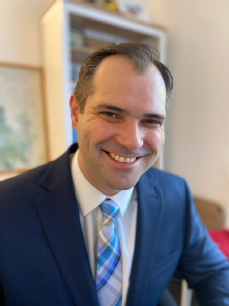 WMG took a key role in two of the four, reshaped projects entitled FutureCat and Nextrode. FutureCat is now entering its second phase with Louis Piper, WMG’s Professor of Battery Innovation, appointed as the new Principal Investigator (PI).
WMG took a key role in two of the four, reshaped projects entitled FutureCat and Nextrode. FutureCat is now entering its second phase with Louis Piper, WMG’s Professor of Battery Innovation, appointed as the new Principal Investigator (PI).
The battery cathode research project, focuses on understanding novel redox processes as a route to stabilise both high capacity, high performance, nickel rich and emerging cathodes and scalable designer morphologies. The next phase of the project will build on its success in developing reliable, scalable routes to deliver a longer lifetime, high-energy/power cathodes, essential for electric vehicles.
Professor Louis Piper explains: "Professor Cussen's leadership on FutureCat has resulted in significant advancements in Ni-rich cathodes. We are looking forward to continuing the pace of Ni-rich cathode innovation and development in phase II of the project. I am pleased that she will still work closely with the team."
James Gaade, Research Programme Director, commented: “We extend enormous thanks to Professor Serena Cussen for her engaging and collaborative leadership of the FutureCat project since its inception in 2019. In Professor Louis Piper the project has an accomplished research leader to take over the reins. WMG, University of Warwick has always been a key university partner for the Faraday Institution and is currently a member of five of our cross-disciplinary, multi-university battery research projects. We’re delighted to see the University becoming project lead for the first time.”
Professor Serena Cussen, former Principal Investigator of FutureCat, commented: “It has been the greatest privilege to lead the UK Faraday Institution's consortium on next-generation cathodes, FutureCat, as principal investigator since its inception in 2019.
“At the heart of our success has been a shared research vision and a culture of collaboration, which has seen our consortium deliver deep scientific insights on next-generation cathode discovery, development and scale-up as well as exciting partnerships with industry colleagues.
“While I am sad to leave the role of PI of FutureCat, I am delighted to see my friend and colleague Professor Louis Piper take over the leadership of this fantastic project. I have no doubt this is a project which will continue to go from strength-to-strength, and I look forward to collaborating with the FutureCat family of researchers.
Read more about FutureCat here: https://futurecat.ac.uk/
University support boosts West Midlands economy by £450 million – for every £1 invested, £22 returned to the local economy
WMG at the University of Warwick has boosted the West Midlands economy by £450 million – with every £1 invested into WMG’s small and medium enterprise (SME) programmes, around £22 has returned to the local economy.
Celebrating 20 years of tailored business support, WMG has delivered manufacturing expertise to 15,000 SMEs in the Midlands. It has supported the creation of more than 13,000 jobs, 350 new businesses and 355 internships over the last two decades.
WMG has delivered critical projects to SMEs to help them succeed in digitalisation, business change and product design. A key ongoing project is helping SMEs mange the energy crisis with a specialised toolkit and tailormade roadmaps to help organisations reach Net Zero.
As a High Value Manufacturing Catapult (a government initiative driving manufacturing innovation), WMG is playing a pivotal role in the revival and development of the West Midlands and the wider UK manufacturing base.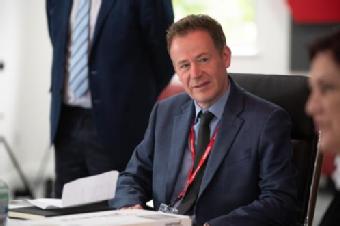 Dr Mark Swift, Director of SME Engagement at WMG, University of Warwick, said: "Our work over the last 20 years has shown that targeted, high value support can help SME manufacturers accelerate growth, improve productivity, and create jobs.
Dr Mark Swift, Director of SME Engagement at WMG, University of Warwick, said: "Our work over the last 20 years has shown that targeted, high value support can help SME manufacturers accelerate growth, improve productivity, and create jobs.
"It is vital that we continue to be a guiding force to help businesses implement new technologies, develop their teams, and continue to innovative and prosper. We have an important legacy to protect and continue and I am delighted to lead a team of industry experts working tirelessly to do just this."
Adrian Williams, Managing Director, Pashley Cycles, said: "Working with WMG over the years has given Pashley the opportunity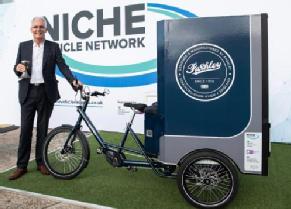 to take advantage of skills, expertise and facilities which we would never otherwise have access to. This is really helping us create robust and reliable, yet lightweight products which we’re confident will give us a competitive advantage in the market.”
to take advantage of skills, expertise and facilities which we would never otherwise have access to. This is really helping us create robust and reliable, yet lightweight products which we’re confident will give us a competitive advantage in the market.”
Peter Davies, Co-Chair of the Manufacturing Assembly Network and CEO of James Lister & Sons, said: "WMG has been an outstanding source of advice, guidance, support and access to funding opportunities for all members of the Manufacturing Assembly Network (MAN).
"The specialist assistance has helped us unlock innovations, bring new services to market, achieve efficiency gains and, in more recent years, accelerate our move towards sustainable manufacturing and taking advantage of the green economy.
"WMG 'gets' manufacturing and what we need and is happy to work with us to achieve an outcome that works for all parties."
Founded by the late Professor Lord Kumar Bhattacharyya forty years ago, WMG began offering tailored support to SMEs in the Midlands in 2004.
Read more about WMG and the manufacturing supply chain here.
Media contact
University of Warwick press office contact:
Annie Slinn 07876876934
Communications Officer | Press & Media Relations | University of Warwick Email: annie.slinn@warwick.ac.uk
Celebrating British Science Week 2024
Staff and students from across WMG at the University of Warwick had another busy, fun-packed British Science Week, taking part in a total of seven special STEM events reaching out to more than 1,100 young scientists, teachers, and families.
British Science Week is a ten-day celebration of science, technology, engineering and maths running from 8-17 March. It’s a chance to look into the future and celebrate the impact scientific ideas can make on society.
WMG staff and students were supported by the Outreach Team at the University of Warwick’s Resonate Festival of Science and Technology; hosted science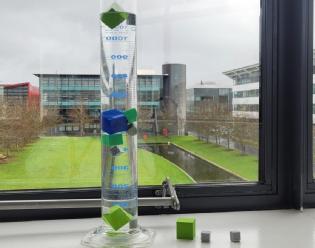 days at local schools and held an event at the Coventry Transport Museum for parents and children embracing home schooling.
days at local schools and held an event at the Coventry Transport Museum for parents and children embracing home schooling.
The Resonate Festival of Science and Technology welcomed over 500 people. Here them team ran an area called ‘Experience Engineering’ which featured science experiments; the opportunity to write code to control a digital embroidery machine; the navigation of robotic vehicles through a maze and more. Visitors were also able to meet the undergraduate student teams from Warwick Racing, Warwick Rail, Warwick Sub, and CyberWomen@Warwick.
WMG’s Director of Outreach and Widening Participation, Professor Margaret Low, explained: “These experiences allow students to see how their school learning applies to complicated and world-changing technologies. Through our outreach programmes we hope to inspire young people to pursue careers in STEM, widen participation in higher education and foster a culture of diversity in the future STEM workforce.”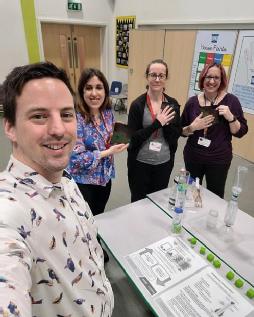
WMG’s Widening Participation Co-ordinator, Dr Phil Jemmett, added: “WMG and the High Value Manufacturing Catapult have outreach activities that are designed to give students a sense of ownership, since there are always elements they can re-create or try out at home. All the experiments we use in science shows or at public events are written up on our website under WMG Experiments, and we show the audience how it all works.
“It’s never magic – this is something anyone can do if they put their mind to it. We want to show people how exciting science and engineering can be, and that anyone can be an engineer.”
Caroline Cannon, WMG’s Outreach Project Officer added: “None of this would be possible without our brilliant network of helpers from within WMG and the High Value Manufacturing Catapult. They dedicate their time, on top of their busy day jobs and family commitments, to extend the reach of our programmes and to ensure the students have really memorable STEM experiences. We are so grateful to them.”
Find out more about WMG’s Outreach programmes here: Outreach and Widening Participation (warwick.ac.uk)
